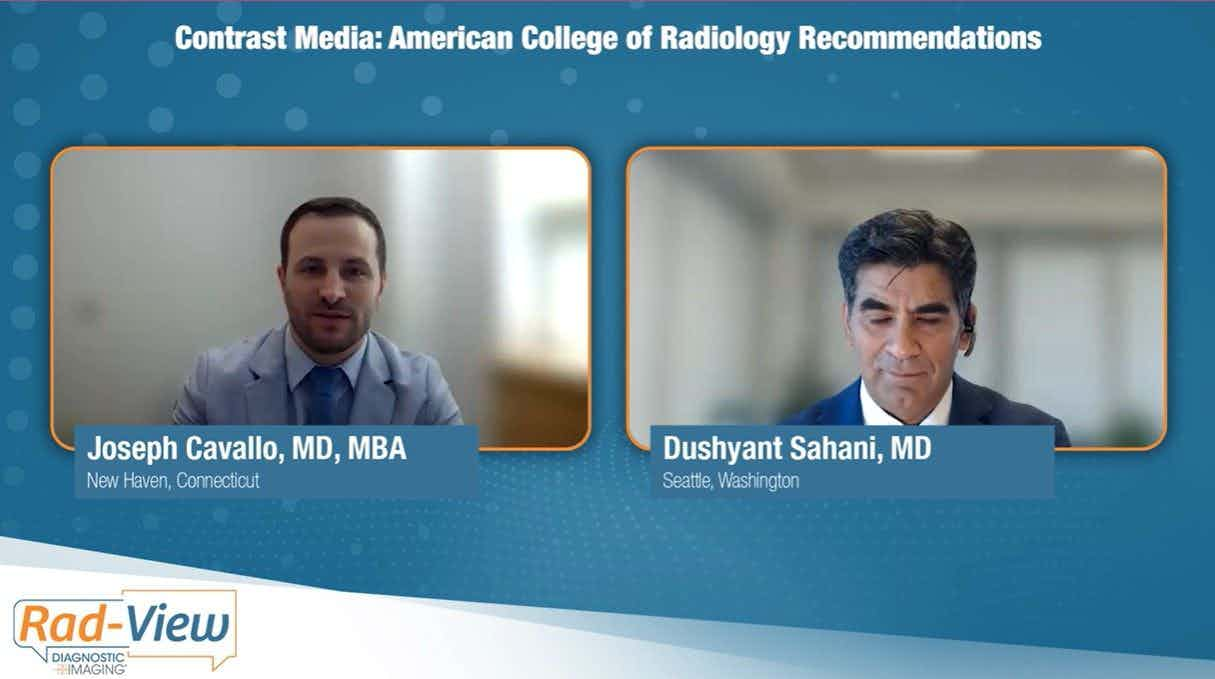For assessments of head and neck vasculature, emerging research suggests that ultra-high resolution (UHR) photon counting detector computed tomography angiography (PCD CTA) may offer key advantages over energy-integrating detector CTA (EID CTA).
For the prospective study, recently published in the American Journal of Roentgenology, researchers reviewed data from 103 patients (mean age of 61.3) who had head and neck UHR PCD CTA, and compared 0.2 mm slice thickness UHR reconstructions of varying kernel sharpness to an 0.8 mm slice thickness reference reconstruction at Bv40 kernel sharpness. Employing a Likert scale of 1-5 with 5 denoting the highest quality), two radiologists provided independent assessments of the reconstructed images with respect to vessel visualization, soft plaque delineation and reduction of blooming artifacts, according to the study.
In comparison to the median vessel sharpness of 100.9 HU/mm reported for the reference reconstruction, the researchers noted 121.6 HU/mm for UHR PCD set at a Bv76 kernel and 134.7 HU/mm for UHR PCD at a Bv80 kernel. The study authors also noted that the UHR PCD kernel settings of Bv76 and Bv80 generated a Likert scale rating of 5 for small vessel visualization from reviewing radiologists in comparison to 1 for the reference reconstruction.
For median stent blooming artifact reduction and median soft plaque delineation, the reference reconstruction was rated with a 1 on the Likert scale by the reviewing radiologist in contrast to a 5 score for UHR PCD kernel settings of Bv76 and Bv80, according to the study authors.
“PCD CTA of the head and neck in UHR mode (slice thickness, 0.2 mm) reduced blooming artifact from calcified plaques or stents while improving visualization of soft plaques and small vessels in comparison with reference reconstructions reflecting conventional clinical protocols,” wrote lead study author Naying He, M.D., Ph.D., who is affiliated with the Department of Radiology at Ruijin Hospital and the Shanghai Jiao University School of Medicine in Shanghai, China, and colleagues.
Noting that blooming artifacts on conventional CTA can lead to overestimation of the size of calcifications and stents, the researchers noted increases of the median right internal carotid artery C2 luminal diameter from 3.8 mm for the reference reconstruction to 4.1 mm and 4.9 mm for the UHR PCD kernel settings of Bv48 and Bv80 respectively.
“In the present study, as the vascular kernel strength increased, the C2 lumen diameter progressively increased, indicating a progressive reduction in blooming artifacts (consistent with prior studies of the UHR PCD CTA for coronary artery evaluation),” added He and colleagues.
Three Key Takeaways
1. Improved vessel visualization and plaque delineation. Ultra-high resolution (UHR) photon counting detector computed tomography angiography (PCD CTA) significantly enhances the visualization of small vessels and soft plaques compared to conventional energy-integrating detector (EID) CTA. The study noted higher Likert scale ratings for UHR PCD settings (Bv76 and Bv80), scoring 5 versus 1 for conventional protocols.
2. Reduction in blooming artifacts. UHR PCD CTA at 0.2 mm slice thickness and increased kernel strengths reduces blooming artifacts from calcified plaques and stents. This leads to more accurate assessment of vessel luminal diameters with increased clarity and reduced overestimation of stent and calcification sizes.
3. Trade-offs in image noise and SNR. Although UHR PCD CTA improves vessel visualization, it comes at the cost of increased image noise and a lower signal-to-noise ratio (SNR), particularly at higher kernel strengths (e.g., Bv80). The study suggests selecting kernels based on clinical context to help achieve an appropriate balance between image quality and noise.
While the reviewing radiologist rated the higher UHR PCD kernel settings of Bv76 and Bv80 as providing optimal soft plaque visualization, the study authors noted that in comparison to the reference reconstruction, the UHR PCD Bv80 kernel setting had over 10 times the median image noise (60.4 HU vs. 5.7 HU) and a nearly tenfold reduction in the signal-to-noise ratio (SNR) (5.7 vs. 56.8).
“Accordingly, in practice, a kernel could be selected based on the given clinical context (e.g., selection of a strong kernel in the presence of a stent),” pointed out He and colleagues.
(Editor’s note: For related content, see “Can Polyenergetic Reconstruction Help Resolve Streak Artifacts in Photon Counting CT?,” “Meta-Analysis Shows Superiority of CT Angiography Over SPECT and Functional Testing for Obstructive CAD” and “Five-Year Study Shows Significant Overuse of CT Angiography in the ER.”)
In regard to study limitations, the authors acknowledged a lack of comparison between PCD CT and energy integrating detector (EID) CT, and the use of one PCD CT device to perform all PCD CTA exams. The researchers conceded that variable matrix size across kernels may have had an impact on image noise assessment. They also suggested possible bias with the review of exam reconstructions being performed in a single session.











